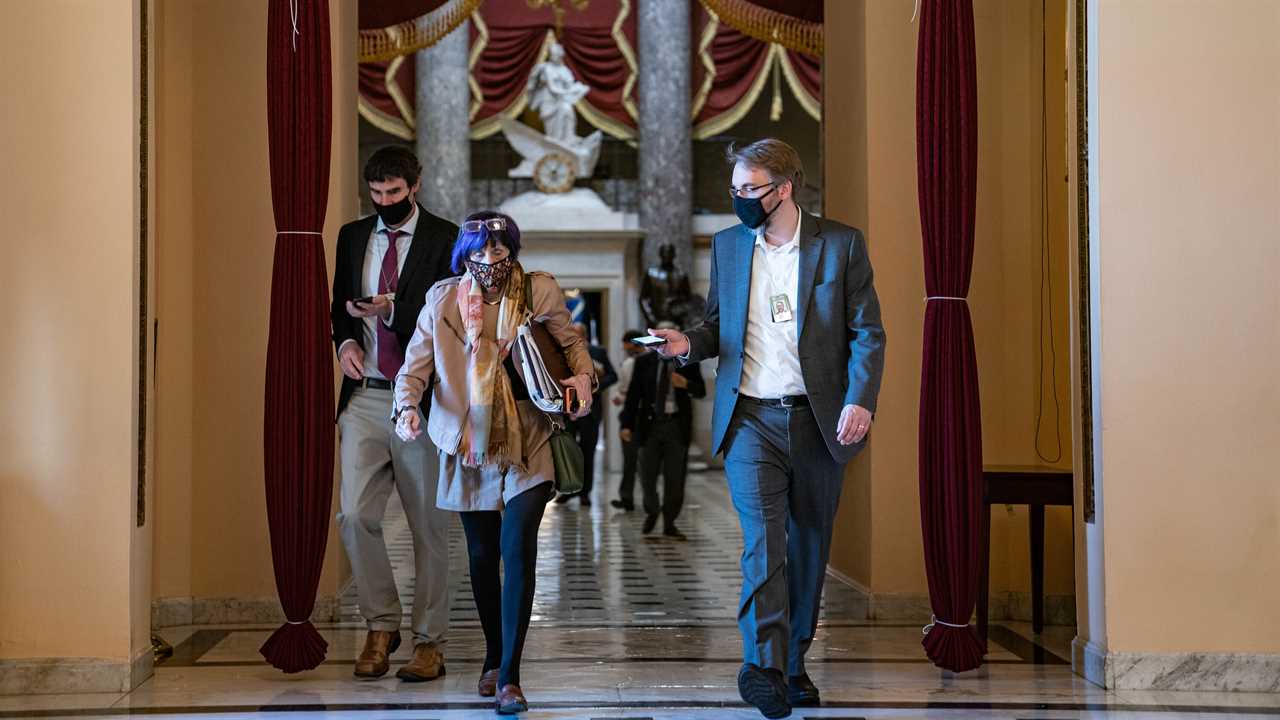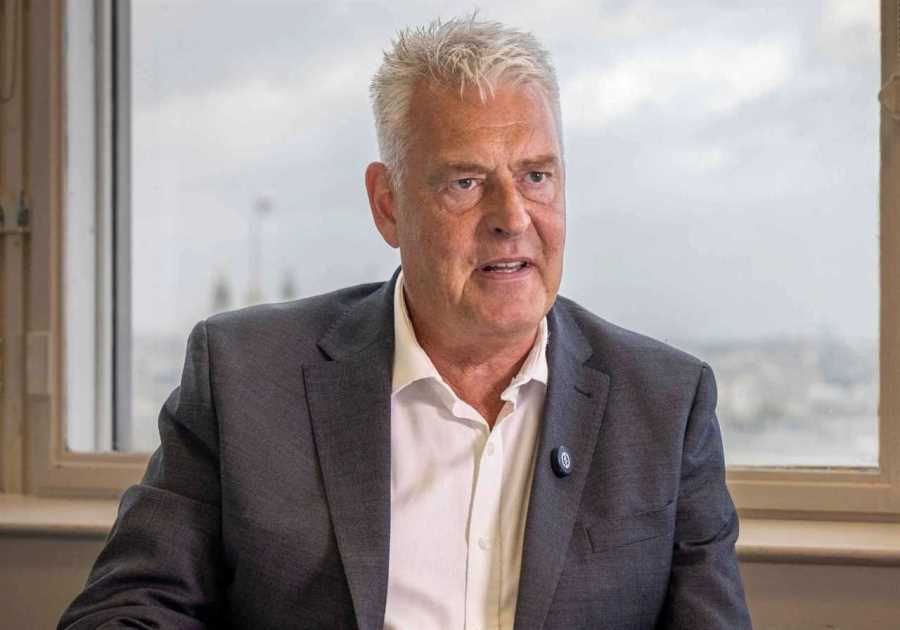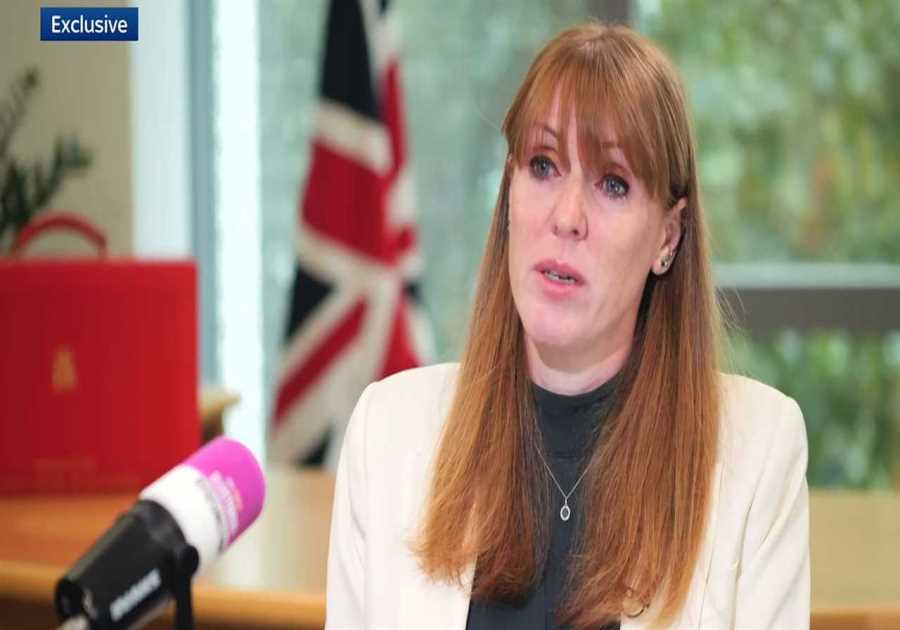
WASHINGTON — As President Biden stood in the Rose Garden this month, basking in the glow of his newly enacted $1.9 trillion stimulus package, he singled out two lawmakers who had been toiling away in relative obscurity on its key provisions for years.
“Rosa, you and I’ve spent so much time on this,” Mr. Biden said, addressing Representative Rosa DeLauro, Democrat of Connecticut and a 30-year veteran of the House. “You guys — you, Patty and others — are the ones that have been leading this for so long, and it’s finally coming to fruition.”
Patty, as in Senator Patty Murray, a Washington Democrat beginning her 29th year in Congress, and Ms. DeLauro have spent decades working on initiatives to lift children out of poverty, often behind the scenes and out of the spotlight.
But as Mr. Biden, 78 and himself a 36-year veteran of Capitol Hill, presses forward with an ambitious liberal agenda — including the sprawling pandemic aid law that is projected to cut child poverty by as much as half — Ms. DeLauro and Ms. Murray have deployed their legislative muscle and deep experience to deliver on his bold promises.
The two teamed up to ensure that passage of the stimulus law included a lifeline to the nation’s poorest families, expanding an existing tax credit to provide additional payments for a year to an estimated 27 million vulnerable children. Their success at doing so underscores a generational divide that is driving Congress in the Biden era: As the Democratic Party is energized and pulled to the left by a dynamic and diverse set of newcomers, it is the liberal veterans — many of them women — who have built up expertise and influence and are positioned to push through landmark initiatives.
Ms. DeLauro, 78, the colorful daughter of Italian immigrants who settled in New Haven, Conn., and Ms. Murray, 70, the quiet, self-described “mom in tennis shoes” who worked in her father’s five-and-dime store outside Seattle, had labored for decades, sometimes fruitlessly, on child poverty, education and health care issues. So when Mr. Biden came into office promising a sweeping federal rescue initiative, they already had proposals on their shelves and a keen sense of what it would take to get them done.
They worked the phones with White House officials and haggled with their colleagues to help usher through what is regarded as the most aggressive federal intervention to help impoverished children since the New Deal.
“They are the worker bees of the Congress — when it comes to social and domestic policy, these two ladies just rule,” said Leticia Mederos, who worked for both women and was most recently Ms. DeLauro’s chief of staff, during two decades on Capitol Hill. “So much of the Democratic platform runs through their agendas, but it wasn’t always like that. Fifteen years ago, it was like we were on the outside looking in.”
Even now that their party enjoys unified control in Washington, the two have had to fight for their issues to be addressed. As Mr. Biden prepared to unveil his stimulus plan, Ms. DeLauro heard that the child tax credit, a proposal she first introduced 18 years ago this month, was not part of it. She swung into action, staying up late calling a list of top White House officials — including Ron Klain, the chief of staff; Susan E. Rice, the director of the Domestic Policy Council; and Steve Ricchetti, Mr. Biden’s counselor — until she won agreement to include it.
“I wasn’t going to take no for an answer,” Ms. DeLauro said.
Across the Capitol, Ms. Murray, now the chairwoman of the Senate health and education committee, was strategizing with Senator Chuck Schumer of New York, the majority leader, on how to keep Democrats united as they maneuvered the measure through the chamber. She and her staff were also part of efforts to hammer out major provisions in the stimulus package, including a substantial temporary expansion of subsidies purchased under the Affordable Care Act and the terms of a significant portion of the bill’s school funding.
“It’s so clear that you can come here and bring those issues up and people nod, ‘Yes, that’s good,’” Ms. Murray said. “But you don’t get it as a priority. You don’t get it in a legislative package. You don’t get to vote.”
“But now we have more women here who have been working,” she added. “They are here, and they’re giving us the vote, and it’s just awesome.”
For both lawmakers, the work is deeply personal.
Ms. DeLauro remembers returning home one Friday night as a child to find her family’s furniture on the street. They had been evicted, and they went to live with her grandmother until they had regained their financial footing.
She still carries the feeling with her into the halls of Congress, and the needs of struggling families are never far from her priorities during negotiations, she said.
“It’s not that my male colleagues don’t think of these things,” Ms. DeLauro said. “But just a reminder — we bring to it a sense of what is important to families, what’s important to kids.”
As a teenager in Washington, Ms. Murray and her family, including six siblings, relied for months on food stamps after her father’s illness prevented him from working. Her first foray into politics, famously, was an episode in which she said she was dismissed by a state lawmaker as a “mom in tennis shoes” who would fail in her efforts to beat back budget cuts targeting a preschool program. She embraced the label and has campaigned on it ever since.
“All of these issues are things that are lived experiences of a lot of Americans,” Ms. Murray said. Her focus, she added, has been on policies that ensure that Americans feel “that there’s a place for them in this country that allows them to be able to work and take care of their families at the same time.”
Children “are the reason she wakes up every day — they are the most important thing in her life and in her profession,” said Mike Spahn, a former chief of staff. “She is only in politics because she was personally motivated by the impact that government policy had on the lives of children.”
Ms. Murray was a state senator in 1991 when Anita Hill testified before the all-male Judiciary Committee during the Supreme Court confirmation hearing for Judge Clarence Thomas. Ms. Murray watched Ms. Hill testify about the sexual harassment she said she had experienced working for Judge Thomas and found herself inspired to run for the Senate.
“I sat hundreds of miles — thousands of miles — away, and I’m thinking these people don’t speak to the issue,” Ms. Murray recalled in an interview. “There’s nobody sitting in the Senate who can fight for what I believe in, because they don’t know it.”
A year later, she was among the four women newly elected to the Senate, setting a record in what would become known as the Year of the Woman. (There are now two dozen women serving there; Ms. Murray is the second-most senior.)
“I think a lot of the male senators were really afraid of that — afraid of us,” she recalled. “‘Oh, my God, what are they going to do? Are they going to burn the streets down here?’”
She recalled one of her male colleagues being baffled when she abandoned a Senate vote to go care for her son, who had gotten sick at school.
Ms. Murray quickly learned the ropes, becoming practiced at cutting deals with Republicans and inserting critical provisions into unwieldy bills. She honed her skills as a legislative tactician with the help of two fellow Democrats who were masters of Senate procedure and policymaking: Senator Robert C. Byrd of West Virginia, the chairman of the Appropriations Committee, and Senator Ted Kennedy of Massachusetts, who led the health and education committee, wielding the same gavel Ms. Murray now holds.
When an ailing Mr. Byrd was no longer able to manage the procedural minutiae of the Senate’s annual appropriations process — a sprawling, tedious and crucial task — it was Ms. Murray who stood in for him.
“She really learned the inside game and the art of lawmaking,” Mr. Spahn said. “There are a ton of incredible advocates, but there are fewer and fewer who know how to translate that into not just policy, but law, and she learned from that old-school crew who are in the hall of fame.”
While Ms. Murray is a distinctly quiet and private figure, Ms. DeLauro is her opposite. Known for her vivid hand gestures, often accentuated by statement jewelry and scarves — and a shock of colorful dyed hair in her signature bob — Ms. DeLauro is a whirlwind of energy on the House floor.
She followed in the footsteps of her parents, who were local government officials in New Haven and often opened the family’s kitchen table to neighbors — many fellow Italian immigrants — who needed help. Ms. DeLauro gravitated to public service.
She went to work for Senator Christopher J. Dodd of Connecticut, serving as his chief of staff for seven years before going over to Emily’s List, a political action committee that works to elect Democratic women. In 1990, Ms. DeLauro ran herself, winning a House seat representing a district in central Connecticut that included her native New Haven.
Once in Washington, Ms. DeLauro became a close ally of a Democratic House member from California, Nancy Pelosi, long before Ms. Pelosi ascended to the speakership. Over the years, Ms. DeLauro climbed the ranks of the Appropriations Committee while remaining in Ms. Pelosi’s tightly knit circle of advisers. She is now the second woman to lead the panel. While she is unapologetically liberal, Ms. DeLauro also has the pragmatic impulses of a veteran of high-stakes legislative fights.
The stimulus talks tested that approach. Because of the strict budget rules that govern the reconciliation process that Democrats employed to move the bill through the Senate without any Republican votes, Ms. DeLauro and Ms. Murray could not secure a permanent expansion of the child tax credit or the new Affordable Care Act subsidies.
They took part of a loaf, making the provisions temporary and setting up what promises to be a bruising political fight next year over whether to extend them. As Mr. Biden readies a two-part infrastructure plan that is expected to include a significant investment in child care and supporting women in the labor force, both lawmakers are likely to play a large role in shepherding it through Congress.
“If something is not to be, and you can’t get it done, then you look for the way in which it can partially get it done,” Ms. DeLauro said. “What are the things can you get, so it’s not my way or the highway? That’s not what the legislative body is all about.”






